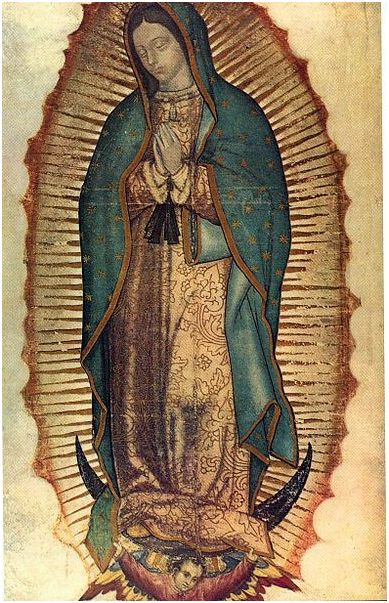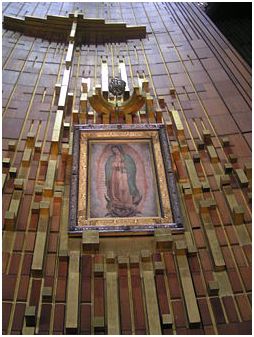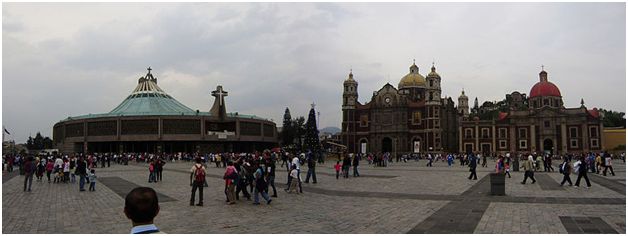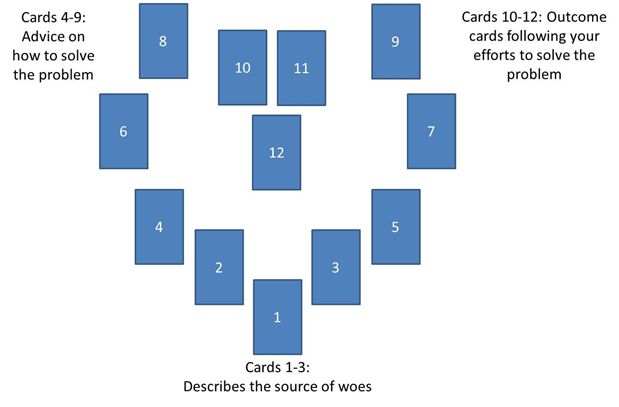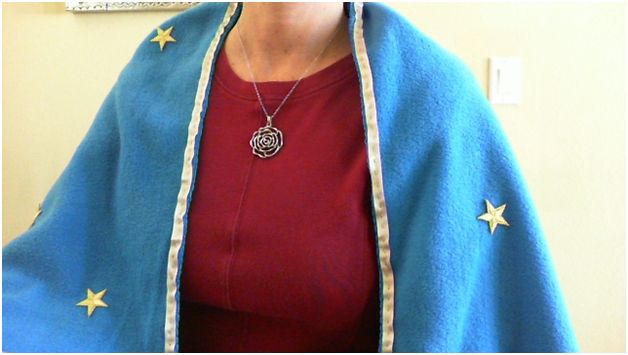The White Moon Goddess Gallery Presents
Our Lady of Guadalupe—Goddess of the Americas
Level Two Project by Rosemary
Adept in the Sisters of the Rising Moon School© 2012. All original material in this site is under copyright protection and is the intellectual property of the author.
Author’s Note: While the Legend of Our Lady of Guadalupe and the associated practices stem from mostly Roman Catholic history and prayers, it is my opinion that Our Lady of Guadalupe transcends one single Christian religion and that Her appearance on this continent is truly a visitation from the Goddess. In many writings, others have lovingly addressed Her as Goddess of the Americas. For those of a Catholic background, the history and prayers may be familiar; for those following the Goddess path, many of the prayers and suggested practices can be adapted for Goddess worship, and it is my intent to honor both paths here. However, for those following the Goddess path, please keep in mind that some who wish to honor Her are not willing to do so outside of the Catholic Church and may not share your Goddess-oriented enthusiasm! But thankfully, we can all honor Our Mother.
The Legend
December 9, 1531—Juan Diego, (Christian name for Quahtlatoatzin—‘The Eagle Speaks’) was going to Mass. He reached Tepeyac Hill and heard singing birds and a woman’s voice calling him. She introduced herself as the Virgin Mary and requested a temple be built for her on the hill—she asked Juan Diego to go to the local bishop to ask this. He was not successful, and he asked the Lady, in the second of her apparitions, to pick someone more important for this task, someone who was noble. Juan Diego visited the bishop again, who asked for a sign or proof, and then sent scouts to track him—although they were unsuccessful.
Juan Diego had an uncle who was on his deathbed, and who asked Juan Diego to fetch a priest. Juan Diego went off to do this, and attempted to avoid the Lady. She intercepted him, healed his uncle, and instructed him to go to the hill where she would provide him with the proof he needed. There, she helped him gather rose blossoms and place them in his tilma, a sort of carry-all cloak.
Juan Diego took these to the bishop and after unfolding his tilma in front of him, not only did they find fragrant, blooming roses (in December! from the barren desert!) but also the miraculous image of Our Lady of Guadalupe on the cloak.
A spring, with miraculous healing waters, is at the very spot where Juan Diego is said to have gathered the flowers (Dunningham 38).
Image of Our Lady of Guadalupe, from Wikimedia Commons
Comforting Words of Our LadyOne of the earliest accounts of the Miracle is from the Nican Mophua, and the Five Questions She asked Juan Diego when he became anxious about the errand She’d asked him to do—these are truly the words of Our Mother:
Am I not here, I, who am your mother? Are you not under my shadow and protection? Am I not the source of your joy? Are you not in the hollow of my mantle, in the crossing of my arms? Do you need something more?
119. Cuix amo nican nica nimonantzin? Cuix amo nocehuallotitlan, necauhyotitlan in tica? Cuix amo nehuatl innimopaccayeliz? Cuix amo nocuixanco nomamalhuazco in tica? Cuix oc itla in motech moneoui?
(http://weber.ucsd.edu/~dkjordan/nahuatl/nican/NicanMopohua.html)
The Tilma Image
The Tilma, according to Celebrating Guadalupe, “has an original image that included her face and body to just below the knees. Her hands are clasped in prayer and she wears a soft greenish-blue mantle and pink underdress. The materials used to depict these original elements remain undefinable, with no visible brush strokes on original portions of the tilma and certain pigments that do not respond to infrared detection” (Dunningham 14). (The author speculates that feathers may have been used for painting and certain pigments would be undetectable.) Additions to the image are the black and gold details, the angel, the moon, the waistband, the neck pendant, and elongation of the body.
Miracles of the Tilma
The life span of maguey fiber is approximately 20 years, yet despite being displayed, touched, kissed, and venerated with soot-emitting candles (and sans protective covering for a long period of time), the Tilma is still intact, 400+ years later.
In 1791, nitric acid was accidentally poured on the cloth, which only suffered a light stain although the silver frame holding the Tilma was significantly damaged by the acid.
In 1921, the Tilma survived a bomb attack, melting a gold and copper cross but leaving the Tilma unharmed. Now, the Tilma survives behind bulletproof glass.
In 1951, an enlarged close-up of the eye of Our Lady showed figures in the iris of the eye, and the human figures (varying in number) are reflected as though they were captured in the lens of an eye.
The forty-six stars on the Lady’s cloak apparently mark the position of the stars in the sky as it was on December 12, 1531. (Hanut 1, 28-31)
There are too many miracles and healings to list here which have occurred either at the site, in front of the Tilma, or with items or people associated with the Tilma. Suffice to say, Tepayac Hill is a special place, and the Tilma is worthy of introspection and meditation.
Image of the Tilma as it is displayed inside the Basilica, from Wikimedia CommonsHistory of Tepayac Hill and Tonantzin
The hill where “the eternal consummate Virgin Saint Mary, Mother of the very true deity, God,” asked for her temple to be built on was once a shrine consecrated to the local Goddess of fertility, rain, and lunar cycles, usually identified as Tonantzin (Dunningham 12).
“Before the arrival of the Spaniards, this hill was the place most sacred to the Aztecs. The shrine of the mother Goddess Tonantzin was built here.” Tonantzin simply means “Our Mother” (Hanut #1 9). Hanut suggests that Tonantzin was mother of all the gods, and perpetually pregnant with them, and may have received sacrifices of pigeons and lambs’ blood, being considered one of the gentlest of the Aztec deities (Hanut #1 9).
John Mini, author of The Aztec Virgin, links Tonantzin with Coatlique, the Earth Goddess, and asserts that Aztecs went to Tepeyac to honor Tonantzin, Our Revered Mother, and that even today, some Spanish speakers begin their prayers with “En El Nombre de la Madre Dios,” (in the name of the Mother God) (Mini 92). This type of ‘scandalous’ address was viewed as “an abuse that must be stopped,” according to Fray Bernadino de Sahagin (Mini 93).
Tonantzin was important to human fertility and crops, and seeds were kept by villagers in Her shrine (Mini 92).
It requires little stretch of the imagination to understand why Our Lady appeared at a site that was once venerated by the Aztecs in honor of their Holy Mother. Despite a new religion that had been brought to the area, Our Lady showed that She never left them, and would continue to be their Mother.
Although Our Lady of Guadalupe is worshipped from a Catholic perspective, there are some practices that can be adapted to either a Catholic or Goddess path.
The Basilica and Plaza, from Wikimedia CommonsDivination
Magic from Mexico recommends consecrating a new set of Tarot cards by lighting a red candle on the night of the full moon and reciting an Ave to Guadalupe (an Ave is a Hail Mary prayer). This book also recommends that you keep your Tarot cards and their container potent by exposing them every month to the light of the full moon while you offer an Ave, plus a fresh white candle to Guadalupe (Devine 16-17).
A suggested reading pattern is called the Santismo Corazon (Most Holy Heart) to “help people with family trouble, feuds, and unhappy love affairs (Devine 19).” The recipient of the reading should handle/shuffle the cards, and then return them with the words, “La Guadalupana puede todo,” (Guadalupe can do everything), and the card reader responds with “Bendita sea,” (Blessed be She) (Devine 19).
Card 13, if necessary, reveals the fate of the ‘enemy’ who caused the problems from Cards 1-3. If the Death card appears, “the foe will pass away soon” and the recipient will have at least one year of happiness (Devine 19). All other cards except the Death card can be disregarded.Magic
Using a recipe adapted from Hanut’s book, here is anointing oil that can be used for candles, objects, papers, etc.
1 ounce jojoba oil
3 drops Rose essential oil
3 drops Clove essential oil
1 drop Cinnamon essential oil
(Olive oil is frequently mentioned as the base oil; however jojoba is a desert plant and lasts a long time without going rancid. Considering that Our Lady appeared at the top of a rocky, desert hill, jojoba oil is an appropriate substitution.) This oil is called Sacred Rose of Tepeyac and can be used for a variety of spells, etc. (Hanut #1 158)Copal is the appropriate incense to honor Our Lady and is best in granular form and burned on charcoal tablets. It is a challenge to find copal in stick or cone form but the granular form has a wonderful, pine-like scent. It’s well worth the money.
Prayer candles (7 day glass jar candles) are an excellent source of images of Our Lady of Guadalupe if you do not own a statue or photograph of Her. Some candles are rose-scented and may include Catholic prayers that can be adapted if you are not. These candles are typically found in the international foods/Latino foods section of many large supermarkets.
The following ritualized practices are from The Road to Guadalupe: A Modern Pilgrimage to the Goddess of the Americas, by Eryk Hanut. Hanut collected these from his visit to a woman who was familiar with these practices, and he suggests they be considered “for entertainment only.” But why not try them, if you have the need? Our Lady listens to our heartfelt needs.
To Attract Prosperity and Money
Rub Sacred Rose of Tepayac oil on a yellow or gold candle, say an Ave Maria (Hail Mary), and meditate on Guadalupe’s generosity, then pray:
All things come from the moon
Even the Sun comes from the moon
O moon, give me a sunbeam
Amen.Begin this at the New Moon and repeat three times and let the candle burn away. (Hanut #1 138).
To Protect a Child from Danger and Disease
Kneel in front of your altar, light a stick of rose incense, then light three votive candles and say:
Our Lady, who loves children tenderly, have pity on us, have mercy on [name], on whom, in Your name, I put my hands and do protect him/her from torment. Evil, no matter who or what you are, in the name of the Virgin of Guadalupe, come out of this child, Amen.
(You can also anoint the candles with the oil, or holy water (Hanut #1 160).
A Ritual of Healing
Find a piece of rope long enough to tie around your waist like a belt. A red cord is ideal, but natural rope is also good. Tie it around your waist and imagine/visualize all negative energies, bad feelings, etc., transferring from you to the rope. Kneel in front of your altar and pray:
Mother, if I suffer violent pain, take it away from me; answer my devotion, remember me. Don’t make me pay any longer. Forget my faults. I want to lose myself in Your love. Use me as you wish.
Untie the rope and burn it outside the house. The wind should scatter the ashes. You can also throw the rope in running water (the sea, a river, or a stream) but not still water, where “your pain will be watered and will grow and come back to haunt you later” (Hanut #1 165). I recommend that as a relatively eco-friendly version, red or undyed embroidery floss can be used and as your ‘rope’, and then burned, rather than placing a rope or thick cord into water where it can become a long-term pollutant or potentially harm aquatic life.
Prayers and Inspiration
Do an Internet search on “prayers to Guadalupe” and you will find yourself reading for several days! By far, the most widely practiced form of devotion is the Rosary, the Catholic version of which can be found here (http://www.rosaryprayerguide.com/) as well as non-Catholic versions, a sample of which is here (http://triplegoddessrosary.blogspot.com/). I have developed my own version of a Guadalupan rosary, which is from a dual perspective, honoring both the history of the Words spoken by Our Lady, as well as providing an avenue for Goddess meditation.
Using a standard Catholic rosary, which may be adapted to remove the crucifix and add a medal of Guadalupe or a crystal if one desires, recite the Queen of Heaven:
The Queen of the Universe
She who did reveal to us
Her love at the proper time
Now descends from the heavens
To the hills of Tepeyac
(Devine 181)On the first large bead, recite the Our Mother:
Our Mother, who are on Earth and in Heaven
Holy is all of creation
May earth be whole in body and soul
Thy Will awaits us to be done
Give us this day what we need
Forgive us our mistakes as we forgive others
Lead us this day in love
AmenOn the three smaller beads, recite the Hail Mother:
Hail Mother, Full of Life
Lady of Earth and Heaven
Blessed are You by all people
And blessed is beloved creation
Holy One, Nuestra Madre
Shelter us, Your children
Now and at the hour of our need
So mote it be.For each decade of beads, recite the Our Mother, followed by ten Hail Mothers. While reciting each decade, focus on the following Questions asked by Our Lady of Guadalupe. To conclude each decade, recite the Blessing Prayer: Blessed by Guadalupe, now and forever.
The first Question: “Am I not here, I, who am your mother?” When have you felt your Mother left you? How did you know she was never gone from your side? What do you do on a regular basis to maintain that connection to your Mother?
The second Question: “Are you not under my shadow and protection?” We have all felt unprotected at times—remind yourself of the actions and devotions you take when you feel this way. Make an effort to protect others who may feel vulnerable.
The third Question: “Am I not the source of your joy?” Just for today, remind yourself how your Mother is the source of your joy—what blessings have you received, for which you may not have expressed gratitude? No matter how small, focus on the joyful events of the day.
The fourth Question: “Are you not in the hollow of my mantle, in the crossing of my arms?” When you feel despondent, remind yourself of how you are comforted by your Mother. You are always close to Her heart, and Her tender love is never far away.
The fifth Question: “Do you need something more?” This is the most important question of all. Speak to your Mother with the words of your heart, with as much clarity as you can. Lay your problems out so that She can help you resolve them. She does not need flowery words or rhetoric—speak plainly and with open need and any tears that may come. She understands. She always has. Our Lady is a lady of everyday people—not just of priests and priestesses, but of all who call upon Her.
Eryk Hanut provides us with an excellent example of what Our Lady wants from us:
And this is the way of Guadalupe
Do listen to me, my littlest ones
I want a shrine in your heart where I will reveal myself.
I will come down from above
And here I will reveal myself to you
Salve, Anonymous, 16th Century (Hanut #2, title page)Clarissa Pinkola Estes wrote a wonderful essay, which was quoted in Goddess of the Americas, Writings on the Virgin of Guadalupe:
Mi Guadalupe is a girl gang leader in Heaven.
She is unlike the pale blue serene woman
She is serene, yes, like a great ocean is serene
She is obedient, yes, like the sunrise
Is obedient like the horizon line
She is sweet, yes
Like a huge forest of sweet maple trees
She has a great heart, vast holiness
And like any girl gang leader ought,
Substantial hips
Her lap is big enough
To hold every last one
Her embrace can hold us,
All…
(Clarissa Pinkola Estes, Guadalupe, the Path of the Broken Heart, reprinted in Goddess of the Americas, 45)While the following does not specifically mention Our Lady of Guadalupe, it is sufficiently similar in nature to be included here:
1. You who are weary with the world, you who are lonely, you who have suffered hardship, and you who have suffered hurt: come, gather about Me and be enfolded in My mantle. 2. In the inner silence you shall hear Me, and in the inner darkness shall you see Me. 3. And the future shall be better than the past. 4. Come, seek protection in My mantle, for I have turned no creature from Me. Be sheltered in the folds of My garment. 5. For the ills of the world shall pass away, even as the terrors of the night. 6. And the dawn shall be bright with splendour and sweet with the singing of the blessed souls. 7. And I shall be your comfort in the darkness.
(From the Filianic Scriptures, “The Mantle,” available at http://femininescriptures.tk/)
Inspired Art
Below is a photo of a prayer shawl I made to honor Our Lady. This was inspired by Our Lady’s words about being held in the hollow of Her mantle. It does not have 46 stars but enough to remind me of Her starry cloak. Not only did I enjoy making it, my cat loved cuddling on it when I was trying to sew it! It is made of soft blanket material and gold trim, and adorned with gold stars. It can be used as a head covering or shoulder covering.
